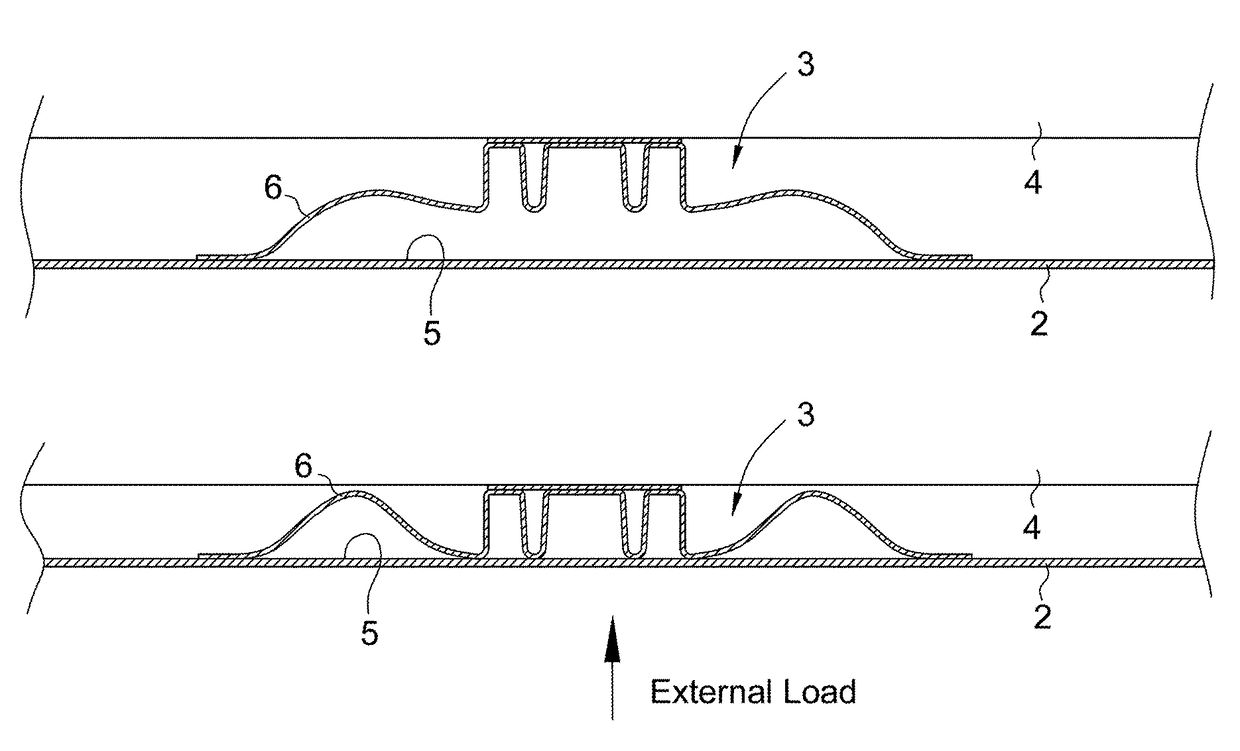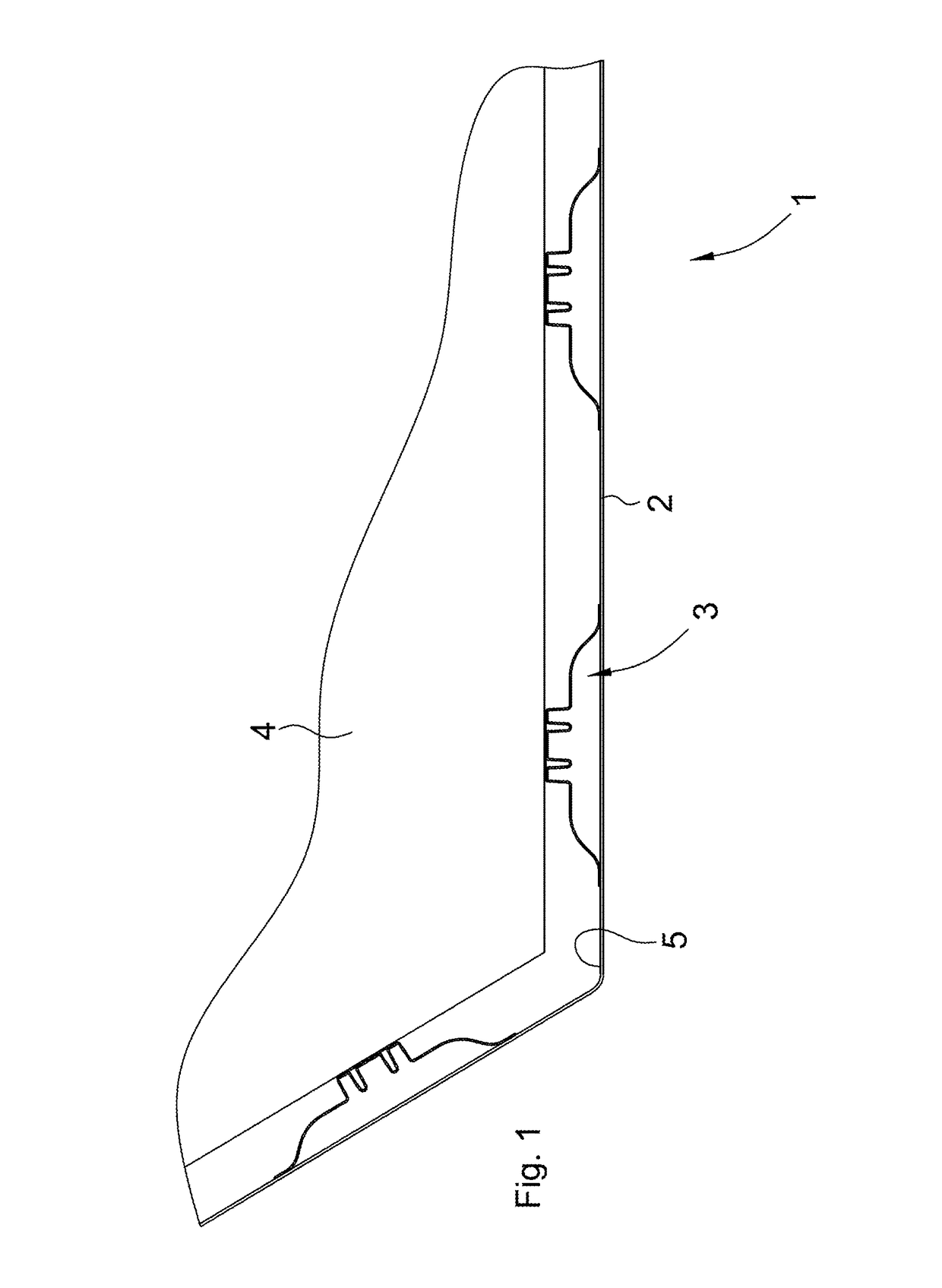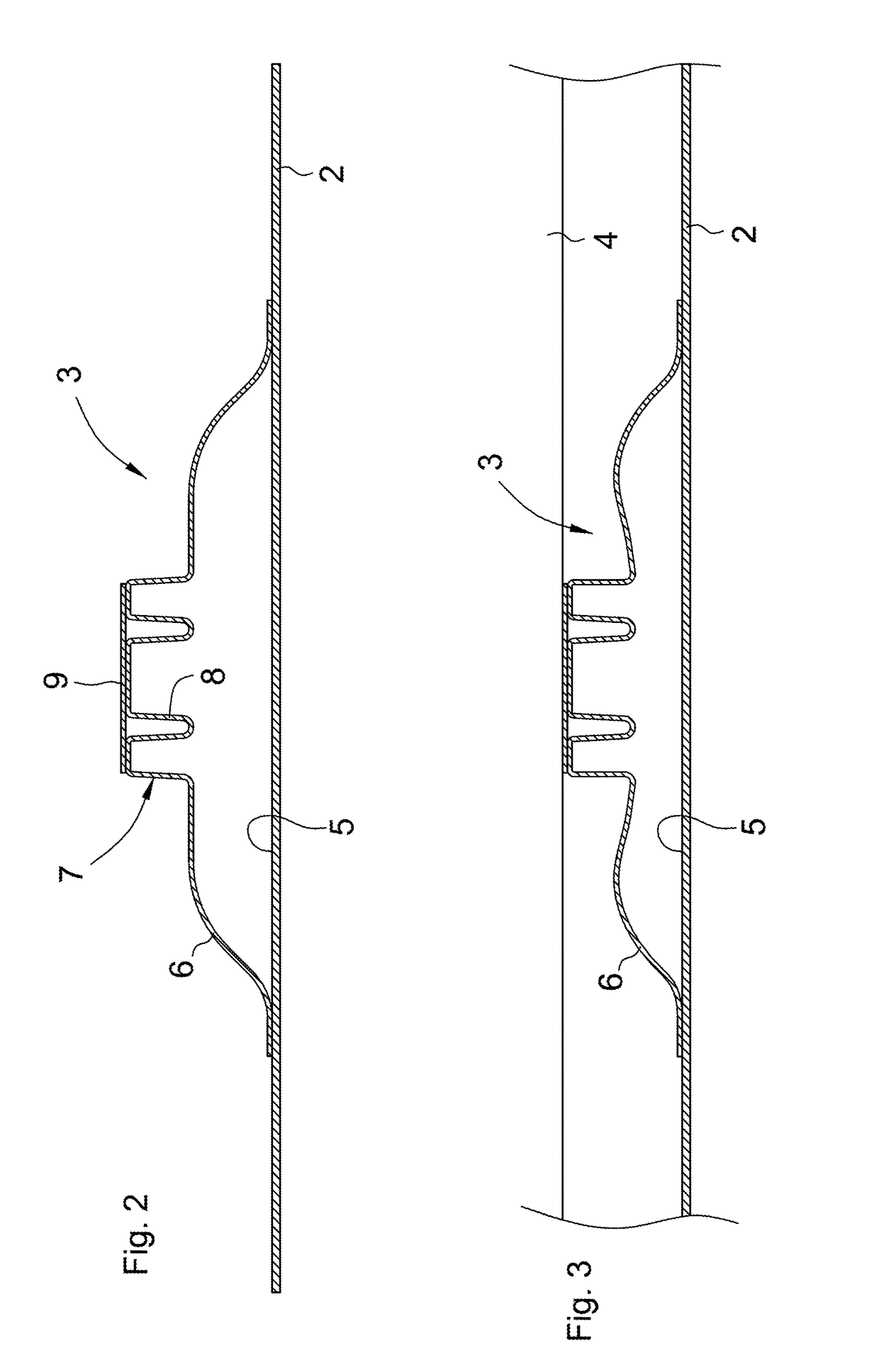Marine hull and marine vessel
a marine hull and hull technology, applied in the field of marine hulls, can solve the problems of plastic boats, hull risks cracking, and large (less than 10 m) boats of such a lightweight structure, and achieve the effect of improving the marine hull and large resistance to permanent deformation
- Summary
- Abstract
- Description
- Claims
- Application Information
AI Technical Summary
Benefits of technology
Problems solved by technology
Method used
Image
Examples
first embodiment
[0028]Reference is made now to FIGS. 2 and 3, in which there is shown a schematic cross-sectional view of a part of the marine hull 1 according to the invention having the longitudinal reinforcement 3 in an unloaded and partly compressed state, respectively.
[0029]The longitudinal reinforcement 3 comprises at least one resilient segment 6 arranged to spring in the direction transverse to the thickness of the hull plate 2, said resilient segment 6 preferably being longitudinal along the longitudinal reinforcement 3. In the embodiment shown, the resilient element 6 has an extended S-shape. Said resilient segment 6, or the longitudinal reinforcement 3, is arranged to bottom upon a compression that is more than 10 mm and less than 50 mm. In other words, upon an applied external force, the hull plate 2 is pressed inward at the same time as the resilient segment 6 springs to absorb the applied external force and thereby permanent deformation of the hull plate 2 is prevented.
[0030]Preferab...
second embodiment
[0033]Reference is now made to FIG. 4, in which an alternative, second embodiment is shown of the longitudinal reinforcement 3 in an unloaded state.
[0034]In this embodiment, the rigid segment 7 comprises, in the same way as in the first embodiment, in cross-sectional a wave-shaped, or serpentine-shaped, plate segment 8 that preferably is connected to a flat strip plate 9. However, with the difference that the in cross-sectional wave-shaped plate segment 8 does not constitute part of the plate having longitudinal bendings that is the major part of the longitudinal reinforcement 3. Instead, the two resilient segments 6 are interconnected by means of a straight intermediate section 10, the wave troughs of the in cross-sectional wave-shaped plate segment 8 being connected to said intermediate section 10.
[0035]The longitudinal reinforcement 3 should preferably have such a shape that possibly condensation on the inside 5 of the hull plate 2 does not risk being accumulated.
Feasible Modific...
PUM
 Login to View More
Login to View More Abstract
Description
Claims
Application Information
 Login to View More
Login to View More - R&D
- Intellectual Property
- Life Sciences
- Materials
- Tech Scout
- Unparalleled Data Quality
- Higher Quality Content
- 60% Fewer Hallucinations
Browse by: Latest US Patents, China's latest patents, Technical Efficacy Thesaurus, Application Domain, Technology Topic, Popular Technical Reports.
© 2025 PatSnap. All rights reserved.Legal|Privacy policy|Modern Slavery Act Transparency Statement|Sitemap|About US| Contact US: help@patsnap.com



